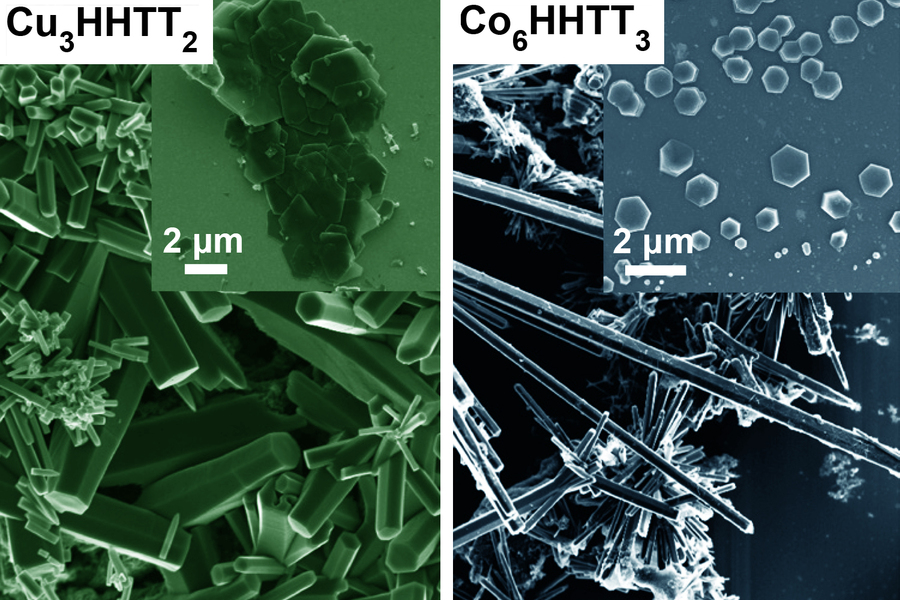MIT News November 23, 2020
MOFs’ extraordinary combination of porosity and conductivity opened the possibility of new applications in batteries, fuel cells, supercapacitors, electrocatalysts, and specialized chemical sensors. Because of the chemical bonds within the MOFs it has been difficult to grow crystals that were large enough for study to figure out their exact molecular structure and how it influences the material’s properties. An international team of researchers (USA – MIT, University of Oregon, University of Connecticut, Purdue University, China, Sweden) has found a way to control the growth of crystals of several kinds of MOFs enabling the team to finally decode the structure of these materials, which resemble the two-dimensional hexagonal lattices of materials like graphene. MOFs have potential applications in electronics and other fields, and because they form a broad family of possible variations with varying properties, it is possible to design the specific kinds of materials needed for a particular use. The research provides a basis and a blueprint for making large crystals of two-dimensional MOFs…read more. TECHNICAL ARTICLE

…This image shows two scanning electron microscopy (SEM) micrographs of Cu3HHTT2 and Co6HHTT3 that can be isolated on-demand with either rod- or plate-like (inset) morphology by varying the synthetic conditions. Credit: MIT